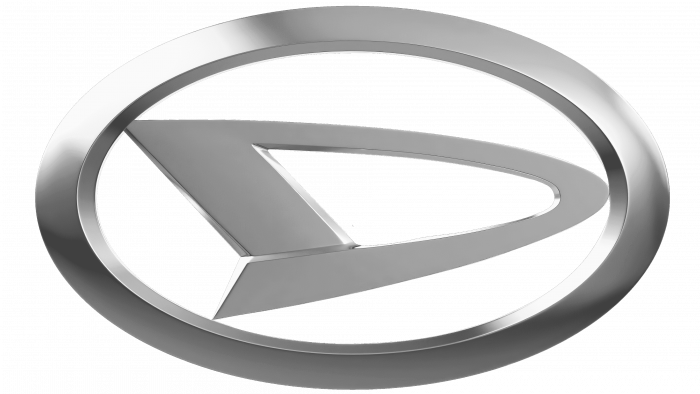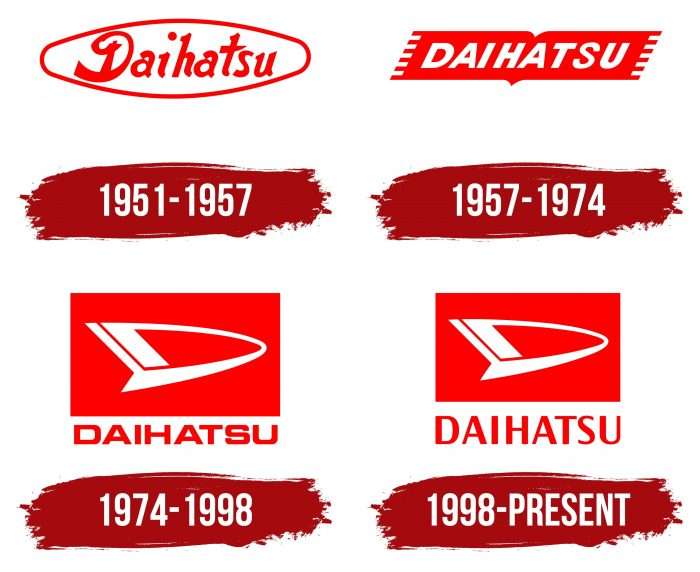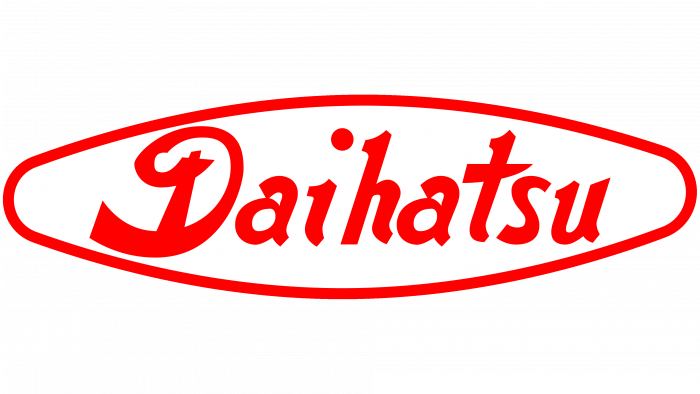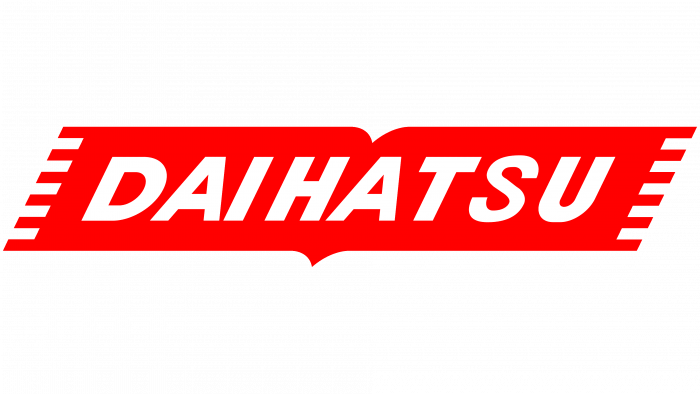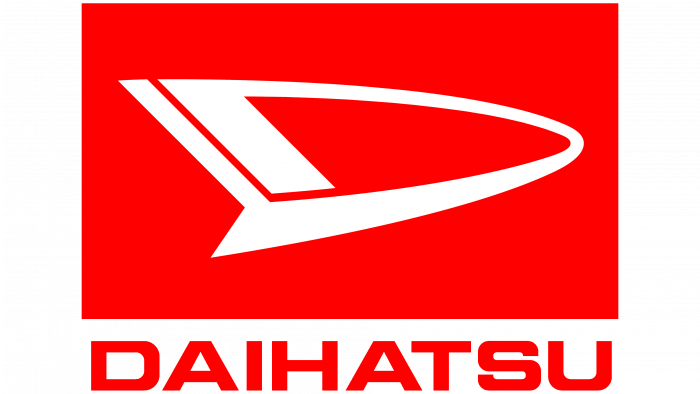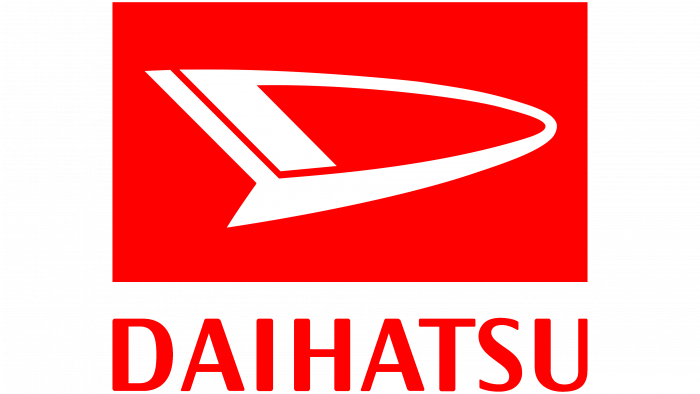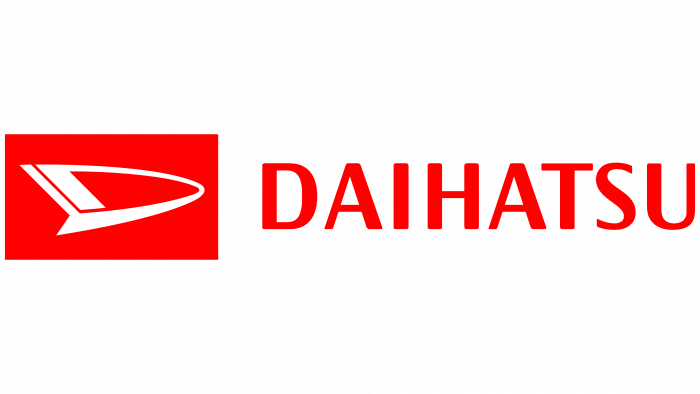Higher, better, and faster – this is the main motto of the emblem. Brand manufacturers are constantly improving. The Daihatsu logo conveys the ideal of design and engineering. The strength and reliability of the company’s machines are encrypted in massive signs.
Daihatsu: Brand overview
| Founded: | March 1, 1951 |
| Headquarters: | Ikeda, Osaka, Japan |
| Website: | daihatsu.com |
Meaning and History
The predecessor of Daihatsu was engaged in the manufacture of gas engines, which confirmed its name: “Hatsudoki Seizo” is translated from Japanese as “engine manufacturer.” Renaming the company, the developers took the first hieroglyph from Osaka (because the plant is located in this city). Still, they chose a different sound option: “dai” instead of “ō.” In Japanese, “dai” can be used as a prefix for “large.” The second half of the name, “hatsu,” is part of the word “hatsudoki.” The combination of two hieroglyphs gave a new combination – Daihatsu.
The brand name became the basis for all logos. Although the first two versions differ markedly in style from the subsequent ones, they are linked by a common inscription. In 1974, the car company had a symbol in the form of the English letter “D.” He continues to be the most recognizable image of Daihatsu.
What is Daihatsu?
Daihatsu is one of Toyota Motor Corporation’s brands. It was established in 1951, succeeding Hatsudoki Seizo Co. Ltd, and was an independent automaker for a long time. Daihatsu is now known for its fuel-efficient vehicles of various types, including SUVs, microvans, minivans, and passenger cars. The company is based in Japan but has several overseas factories in Thailand, Malaysia, and Indonesia.
1951 – 1957
The first logo adopted after the rebranding does not at all resemble the Hatsudoki Seizo Co. brand names. Daihatsu’s predecessor used Japanese inscriptions for quite a long time and ignored the Latin alphabet. This continued until the end of World War II.
But it is worth noting that the font of the word mark Daihatsu, which was created in 1951, is stylized like hieroglyphs. The English letters are designed in an Asian style, as evidenced by the sweeping brushstroke-like lines. The red lettering is enclosed in the same red elliptical frame with elongated edges.
1957 – 1974
In the late 1950s, a new logo with the brand name appeared. The word is now in a printed italic font. All letters are capitalized, white, and on a red background. The inscription is based on a rectangular shape with jagged edges and a triangular protrusion at the bottom. It vaguely resembles an open book.
1974 – 1998
The company continued to play with fonts by opting for sans-serif square straight characters. But this was not the main identity change. In 1974, Daihatsu first introduced the stylized “D” graphic sign. It looks like the nose of a rocket and consists of a single line bent in several places. For maximum contrast, the white letter is shown inside a large red rectangle. The automaker’s name is red and appears at the bottom.
1998 – today
The D-shaped symbol was so successful that the company decided not to change it. But she didn’t back down from experimenting with typography, so now the lettering has become “slender,” without square outlines. Stroke thickness is uneven, serifs, as before, are absent.
Daihatsu: Interesting Facts
Daihatsu, founded in 1907, is one of Japan’s oldest car makers. It’s well-known for making small cars and off-roaders.
- Beginnings: Daihatsu started as Hatsudoki Seizo Co., Ltd. in 1907, making engines before moving on to cars. It got its current name, Daihatsu, in 1951, which combines Osaka’s “大” kanji and “engine manufacture” (発動機製造, Hatsudoki Seizo).
- Small Car Innovator: Daihatsu led the way in Japan’s “kei car” category, which offers tax and insurance perks. Its first, the Daihatsu Midget in 1957, symbolized Japan’s recovery and growth after World War II.
- Going Global: Daihatsu has also played on the world stage. In 1967, it was the first Japanese car brand to export to the UK. In 1988, Toyota bought a big share of Daihatsu, starting a long-term partnership.
- Green Efforts: Daihatsu is a leader in eco-friendly vehicles. In 2000, It was the first in Japan to meet Ultra-Low Emission Vehicle (ULEV) standards. It continues to work on hybrids and other green projects.
- Unique Cars: Daihatsu has made unique models like the Copen, a small convertible from 2002 known for its fold-away roof and swap-out body panels. They also show off new designs and tech-in-concept cars at auto shows.
- Focus on Asia: Though it pulled out from many Western markets in the 2000s to concentrate on Asia and Japan, Daihatsu’s impact is still strong. It makes small cars that fit well in Toyota’s global plan, especially in places where small, efficient cars are popular.
- Tech Push: Daihatsu puts a lot of effort into research and development, aiming to make small cars that are smart, affordable, and cutting-edge. They’re especially focused on electric vehicles, hoping to use their small-car expertise for the future of electric cars.
These points show how Daihatsu has remained important in the car world, thanks to its focus on innovation, eco-friendly vehicles, and teamwork with Toyota.
Font and Colors
The stylized letter “D” is the main distinguishing mark of Daihatsu. It’s simple but very catchy. The company has never updated it, working only with the inscription. The shape of the symbol is associated with movement, development, dynamics, growth. The fact that the “D” points upwards indicates a desire for progress.
The Daihatsu brand has changed fonts several times. At first, the letters were handwritten and resembled Japanese characters. Then the style became more practical. The designers used a slanted sans serif typeface. After 17 years, a wordmark with a square geometric font appeared. The latest version is a grotesque elongated upward with softened corners and with different thicknesses of strokes. It vaguely resembles Artigua Semi Bold or 19-PRA Demi.
The main color of the logo was and remains red. Combined with white, it creates a memorable contrasting combination. This bright hue is associated with Japan, which is also called the Land of the Rising Sun.
Daihatsu color codes
| Red | Hex color: | #ff0000 |
|---|---|---|
| RGB: | 255 0 0 | |
| CMYK: | 0 100 100 0 | |
| Pantone: | PMS 1655 C |
